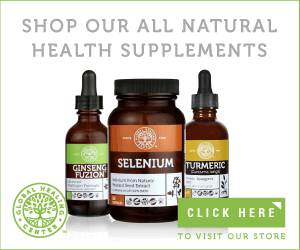
Sometimes using a product simply to improve your appearance can do more harm than good. That’s why I want to go over these 6 crazy facts you might not know about your makeup.
6 Facts about the Toxins in Makeup
The toxins in your makeup are hiding, waiting for their opportunity to attach themselves to your skin and ultimately make their way into your body. These toxins can interfere with hormonal health, which is a huge issue considering that hormones regulate practically everything. Here are some of the crazy facts about the toxins that might be lurking in your makeup cabinet.
1. Cosmetics Contain Brain-Poisoning Aluminum
While people have long since known about aluminum poisoning, a recent report claims that toxic deposits of the metal could also lead to an increased risk for Alzheimer’s. [1]Many of your personal products, like cosmetics, sunscreen, antiperspirants, and even certain medications can contain aluminum. It’s not just these things, though; aluminum might even be added into your food. For example, manufacturers use aluminum sulphate in water for better clarity.
2. Talc May Contain Asbestos
Common in cosmetics, talc can often become mixed with asbestos during mining and manufacturing. Recently, scientists were actually able to track the route of asbestos and talc from origin to exposure. Over the course of a year, the team traced it from the mines to the product to the lung tissue of a deceased mesothelioma patient who had used the body powder for years.
3. Swimming Pools Accumulate Cosmetic Toxins
Pools are normally a place for exercise or relaxation, but a report from late 2014 suggests a possible health risk. In the first study of its kind, researchers noted many personal products were present in pool water samples. As swimmers don’t normally shower before swimming, toxins from the products wash off their skin. Many don’t break down in chlorination as originally thought. These chemicals form an ultra concentrated toxic soup that can be swallowed, breathed in, or absorbed.
4. Makeup and Lotion Can Contain Parabens and Phthalates
Personal products aren’t well regulated, so a lot of nasty stuff can make it on the shelves. Many moisturizers and lotions can contain endocrine-disrupting phthalates or parabens, and, what’s worse, some “green” products are even guilty. [4] Not only toxic to reproduction, these chemicals are linked to an increased risk of cancer. Studies also suggest the more products you use, the higher the concentrations of phthalates and parabens in your body.
5. Cosmetics Can Contain Bacteria
It’s not just chemical toxins–bacteria can also be present in cosmetics. Usually when that happens, a recall takes place. Thousands of products are recalled each year due to this type of contamination, but thanks to lax industry regulations I mentioned earlier, those are usually kept quiet. It might surprise you, but the FDA doesn’t have the authority to order a company to pull a personal product. While it can make a request, it’s the manufacturer that has to take that step.
6. Beware of Microbeads
Unfortunately, we also have to worry about microbeads in the environment. Manufacturers have been adding these tiny plastic beads to body washes and toothpastes for years, and now they’re washing down our drains into our lakes and rivers where they’ll collect toxins and get eaten by fish. The magnitude of this problem is absolutely astounding and the lack of attention it’s getting in the mainstream press is maddening. Luckily, many states are limiting or banning them, and there could even be a federal ban on the horizon.
Homemade Baking Soda Deodorant Recipe
Fortunately today, there are some ways you can avoid these poisons while taking care of your beauty needs. Never feel like you can’t take control of the personal care industry. After all, two huge firms recently announced their plans to disclose all fragrances used in their products. Traditionally, the term “fragrance” could be just about anything—usually toxic—so this is a huge win for consumers.
Someone here at Global Healing Center, fed up with the nasty toxins in conventional antiperspirants, even made her own powerful deodorant using four pretty common ingredients. Not only is there no aluminum, but, so far, it really works! I’ve even provided her easy natural deodorant recipe for you.
- ¼ cup cornstarch
- ¼ cup baking soda
- 4-5 tablespoons coconut oil
Optional: 8-10 drops essential oil(s)
On the stovetop over low heat, combine both powder ingredients in a small saucepan. Add the coconut oil one tablespoon at a time, gently stirring, until the consistency is much like dough. After removing from heat, add drops of essential oil(s) to your mixture, continuing to stir. Finally, spoon your mix into a small glass container and allow to cool.
The mix will remain hard under most temperature conditions, so before applying, you might need to remove the lid and briefly heat the container to soften the contents. A small pan of boiling water will work. When applying, a light coating to your underarms should be fine. Baking soda can be abrasive to some, so you might need to substitute arrowroot powder or adjust your amounts.
One Final Thought
In today’s world, consumers are finally becoming more aware of the toxins in their favorite personal care products. More women are demanding toxin-free makeup options, and manufacturers are slowly beginning to feel the heat. Some organic, paraben-free, and natural cosmetics are available both online and in some stores. Look out for these cosmetics and test them out on your skin to see if they’re a good fit. Also, it may help to write to your favorite cosmetic brand asking for a formula that is health friendly.

